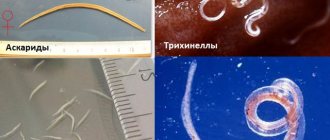Almost every cat owner is familiar with the situation when a pet has fleas (at the same time, the four-legged pet has never left the room in which it lives and has not communicated with its own kind). Read on to find out what these parasites are, where they come from, why they are unpleasant and how to get rid of fleas on a cat.
A flea is a very small insect without wings. It is distinguished by its special jumping ability and mobility. Thanks to their flat body, as if compressed by something, fleas easily avoid external damage - they can almost never be destroyed with your fingers (only if you firmly squeeze them between your nails and crush them). Naturally sharp jaws that dig into the skin of the poor victim are needed to drink blood. Their bites are indeed quite painful.
Causes of fleas
Veterinarians unanimously declare: yes, fleas can appear even in those well-groomed animals that never, under any circumstances, go outside. The owners or their guests can bring them to the house or apartment personally. On clothes and shoes, with the hair of other animals, on children's transport. It only takes one such blood-sucking parasite to get inside the room, and your cat will immediately be attacked.
And although isolation and refusal to walk outside the home does not protect against parasites 100%, they significantly reduce the risk of becoming infected. So, there is an effect from such a precaution. Of course, when an animal is allowed to leave the house, it inevitably interacts with other four-legged animals (house and farm animals), and this risk becomes much higher. Furry participants in exhibitions and “cat” competitions can also pick up the cause of itching in the areas where the events are held.
You should not hope that there will be fewer fleas in winter. Yes, parasites love warm weather, but they also tolerate cold well. Therefore, you can “bring” them in throughout the year. Moreover, the colder it is, the more they strive to get into a person’s home - into the most comfortable living conditions for them. If severe frost kills them, then in the warmth of the house they feel like in paradise.
Fleas, in the absence of a host, whose blood the parasites feed on, fall into a kind of hibernation with a slowdown in vital activity. However, as soon as a victim is identified, they instantly become active.
So the question of fleas in cats is out of season. They are not easy to eliminate, and they pose a threat even to stay-at-home pets.
Are cat parasites transmitted to humans?
Many pet owners wonder whether cat parasites can spread to humans.
The cat flea is not very fond of human skin, although it bites when there is no other “victim” nearby. It will not live or reproduce on the body, since the temperature in humans is lower than that needed by the insect for metabolism and normal existence. And the cat’s temperature is approximately 38–39 °C, which is very comfortable for a flea. The difference in temperature is quite large, and we also have thicker skin than a pet.
Thus, the question of whether parasites are transmitted from cats to humans can be answered in the negative. But sometimes insects cause trouble: the bitten areas are very itchy.
How can you tell if a cat has fleas?
You can quickly detect parasites if:
- observe the animal (restless behavior, sharp and frequent reactions to itching, even wounds due to biting into the skin);
- look for traces of the presence of insects (examine the surface of the skin for adults; lower the cat onto a white sheet of paper and comb out the fur or wipe the pet with a white paper towel; if you see black and brown dots, these are traces of flea feces, which turn brown under the influence of a drop of water shade);
- visit a veterinarian (he will accurately determine the presence or absence of fleas).
The likelihood of fleas in four-legged felines increases with dermatitis, hot or pulsating areas on the pet's skin, hair loss or bald patches.
Danger of ectoparasites
In addition to the serious discomfort that blood-sucking insects living in its fur cause a cat, fleas pose a great danger. They are carriers of a huge number of dangerous diseases. Some of them can be fatal. A number of diseases carried by fleas are dangerous not only for animals, but also for humans.
Fleas carry:
- the causative agent of yersiniosis - an acute intestinal infection accompanied by a toxic-allergic reaction;
- bacteria that cause Far Eastern scarlet fever (pseudotuberculosis);
- plague stick;
- causative agent of hemorrhagic septicemia (pasteurellosis);
- bacteria that cause intestinal infection salmonellosis;
- Brucella;
- bacteria that cause tularemia;
- rickettsia;
- hepatitis viruses type B and C, tick-borne encephalitis;
- Trypanosomes are protozoan parasites that cause a number of diseases in humans and animals.
In addition, fleas are carriers of helminth eggs. If a cat has a lot of fleas and has been infected with them for a long time, then there is no doubt that she has endoparasites (for example, cucumber tapeworms).
The presence of fleas in a pet leads to a decrease in its immunity and causes various allergic reactions. Also, the appearance of ectoparasites leads to an exacerbation of chronic diseases, if the cat has any. Due to severe itching, the animal constantly scratches its skin, sores and wounds form on the body. They can fester, which will seriously complicate the pet’s condition.
In addition, constantly scratched wounds are a gateway for various pathogenic microorganisms to enter the cat’s blood.
If no measures are taken, a flea-covered cat will develop dermatological diseases of varying severity: dermatitis, dermatoses, eczema, allergic rashes. Her fur may start to come out. In some cases, if treatment is delayed, bald spots may persist forever.
In addition, constant itching and discomfort caused by insects adversely affect the emotional state of the cat. She becomes restless, nervous, cannot sleep normally, and constantly meows.
If a kitten gets fleas, then ectoparasites can cause very serious damage to the body, even death.
In humans, cat flea bites cause allergic skin reactions, itching, swelling and irritation of the skin. Fleas can infect it with infectious diseases they carry, and also cause helminthic infestation.
How to remove fleas from cats?
It is a mistake to think that regular cleaning of the rooms and thorough bathing of the animal is enough to prevent parasites. Cleanliness is great, but even it does not provide a 100% guarantee that a domestic cat will not have fleas.
All it takes is one single parasite jumping over the threshold for peace and comfort to end. And here's the thing. Fleas reproduce incredibly quickly. Only the first of them leaves behind about fifty eggs a day. And further in a circle. Only two months will pass and one unit of the parasite will turn into a horde of fleas, numbering hundreds or more eggs. This is so terrible that it will no longer be possible to ignore the disaster. And if for some reason you have not poisoned parasites before, then you will have to use all the recommended flea remedies.
Please note that simply treating your pet with a special product will not produce results. Living individuals, their pupae, larvae and eggs are able to hide in beds, pieces of furniture, carpets, clothes and even under baseboards.
According to statistics, adult parasites are only one twentieth of the entire flea population in your home. You simply don’t know about the existence of the remaining 95%, but they are about to turn into an army of pests. And if you don’t destroy them, the problem will soon return in an intensified manner. It is necessary to fight both living parasites and what they lay - eggs, larvae, pupae. And for this it is better to consult a veterinarian or even an exterminator.
Often, in order to remove fleas from a cat at home, it is necessary to carry out cleaning in several approaches. Only then will the animal forget about insects and the living space will become the same. And, of course, remember: the best way to kill fleas is their timely prevention. Treat your four-legged friend with anti-flea products and put a special collar on him.
Signs of bites
Flea bites are quite noticeable and unpleasant
It is very important to learn to recognize them in order to begin disinfection in time. After all, insects will not go away on their own: they multiply very quickly and begin to live in:
- cracks;
- carpets;
- sofas;
- bedding.
Here are some obvious signs that you have been bitten by a flea:
- At the moment of the bite, you will feel a prick on your skin, which is much more painful than a mosquito bite.
- Later, red dots may be seen on the skin. Sometimes the blisters swell and the skin around them turns red.
- The affected area is very itchy, causes a lot of trouble and constantly reminds you of itself.
- The bites are approximately 1–2 cm apart. But these are not straight paths, as happens if bedbugs live in the house.
- Insects usually bite legs, since their jumps do not exceed half a meter. But if they settled in the bed or jumped into it, they can bite the whole body.
Depending on the sensitivity of the skin and the characteristics of the human body, the marks after bites can be different: small, invisible or blurred, very large. But they will still disappear in a few days, so there is no need to be afraid.
No scratching - no fleas?
Most owners of pets think that if their pet is not bothered by itching, then there are no insects. But the animal may begin to itch only when the parasites are gnawing on it. And while only a few individuals are running on the surface of its skin (which does not last long), it may not show external disturbance. Therefore, you should periodically examine your pet’s fur in order to detect your pet’s enemy at the initial stage of infection. It also happens the other way around, when the cat itches but there are no fleas. A veterinarian will help you find the cause of the itching (allergies, stress or other diseases cannot be ruled out).
So, we found out that the problem of parasites is relevant for all pets at any time of the year. The main thing is to know how to remove fleas from a cat and disinfest the entire living space.
Review of effective remedies
It is not always possible to independently select a suitable flea drug in the form of drops, since their range is quite extensive. Analyzing information from manufacturers, reviews, and the opinions of veterinarians, we can identify several popular brands that meet the criteria of safety and effectiveness.
Foreign manufacturers
- Hartz. American-made drops destroy flea larvae and oviposition. They should not be used on kittens under three months of age. Apply the product to the occipital area. The effect of the drug lasts for a month, after which the procedure is repeated. The protective effect is not reduced by short-term exposure to moisture. A preliminary consultation with a veterinarian will be required regarding the use of drops for pregnant cats, aging, and sick animals.
- Beaphar. In the line of Dutch-made flea drops, you can choose varieties for kittens and adult cats, including weakened and pregnant ones. The active ingredient is a natural margosa extract that is safe for animals. Convenient packaging in disposable ampoules is offered. The contents are poured onto the withers, lightly rubbing into the skin. By repeating the procedure every 30 days, you can completely protect your pet from fleas.
- Frontline. Due to the low degree of toxicity, drops produced in France by Frontline are approved for kittens from the age of two months. Formulations are used for cats, packaged in disposable pipettes with a volume of 0.5 ml. This drug is also used to rid animals of ear scabies. It must be taken into account that after processing light-colored breeds, the wool can change its original color.
- Advantage. When considering the best drops aimed at killing fleas in cats, it is necessary to note the German drug Advantage, the base substance of which is imidacloprid. Sold in tubes, the contents of which are squeezed onto the withers once a month. The drug is approved for kittens from two months. After treatment, it is necessary to ensure that small pets do not lick the insecticide within three hours.
- Advocate. These are effective drops made in Germany, which have proven themselves as an effective preventive measure. The drug Advocate is contraindicated in weakened animals and kittens under nine months of age.
- Zookeeper. The Belarusian-made drug is distinguished by lasting results after treating cats against fleas. Allowed for kittens two months old. Not recommended for weakened pets.
There is a type of drops that are part of a series of biological products. These include the German-developed Green Fort drug. It is safe because it contains natural ingredients. But it should be borne in mind that the effect of these drops is aimed only at repelling fleas. Therefore, they are more often used as prophylactic agents.
Russian-made drugs
- Bars drops, aimed at cats, have received the most widespread recognition. They destroy larvae and have a detrimental effect on insect eggs, maintaining the effect for almost three months.
- Dana-2 Ultra. The active component is low-toxic fipronil. These drops act quickly and effectively, but are recommended only for animals older than one year.
- The barrier is super. A drug that quickly destroys all generations of fleas. Allowed for kittens over three months old. The duration of exposure lasts two months.
- Inspector. Insecticidal drops that can destroy not only fleas, but also helminths. Prohibited for cats if skin damage is detected. Veterinarian permission is required for use by pregnant females and kittens weighing less than a kilogram.
- Celandine drops can be used by kittens from two months. The dosage is determined in accordance with the instructions and depends on the weight of the animal. If it is below 2 kg, then squeeze out half the contents of one pipette, that is, 0.5 ml. Pets from 3 to 5 kg require 1 ml, and over 5 and up to 10 kg - 2 ml. It is recommended to apply drops to the skin between the shoulder blades. The drug is prohibited for weak, sick animals, and pregnant cats.
Timely measures taken to combat fleas will save cats from serious consequences, such as hair loss, infection with dangerous diseases and allergic manifestations. Modern drops quickly rid animals of blood-sucking insects and show high effectiveness as preventative agents.
Special instructions and personal preventive measures
If symptoms of increased individual sensitivity or signs of skin irritation appear, the drug should be washed off with soap and water or shampoo.
Within 48 hours after treatment, the animal should not be bathed or allowed near small children.
While working with BlochNet drops, you are not allowed to smoke, drink or eat. When finished, wash your hands with warm water and soap.
It is not recommended to pet the animal within 48 hours after treatment with the drug.
If the drug accidentally gets on the skin or mucous membranes, it should be immediately removed with a swab and then washed off with a stream of water.
Empty tubes and bottles of the drug must not be used for household purposes.
Diagnostics
Human papillomavirus infection (genital warts) is diagnosed in different ways, from visual examination of women and men to the most advanced examinations. CM "Global Clinic" has in its arsenal the latest techniques for determining the nature of condylomas. Diagnostic methods used by doctors:
- Clinical examination. Some types of diseases in women and men can be masked, taking the form of genital warts, so you need to have sufficient qualifications to differentiate different problems.
- Colposcopy is recommended for women, and urethroscopy for men.
- A smear will tell a lot about condylomas in women and their nature; this cytotest will also help to exclude cervical dysplasia.
- Histology.
- Diagnostics-PCR. This examination not only detects the presence of human papillomavirus, but also determines its type.
- Immunological research. It is used to detect antibodies to HPV in the blood.
All women and men affected by genital warts must be tested for infectious diseases of the genital area (syphilis, HIV, etc.)











